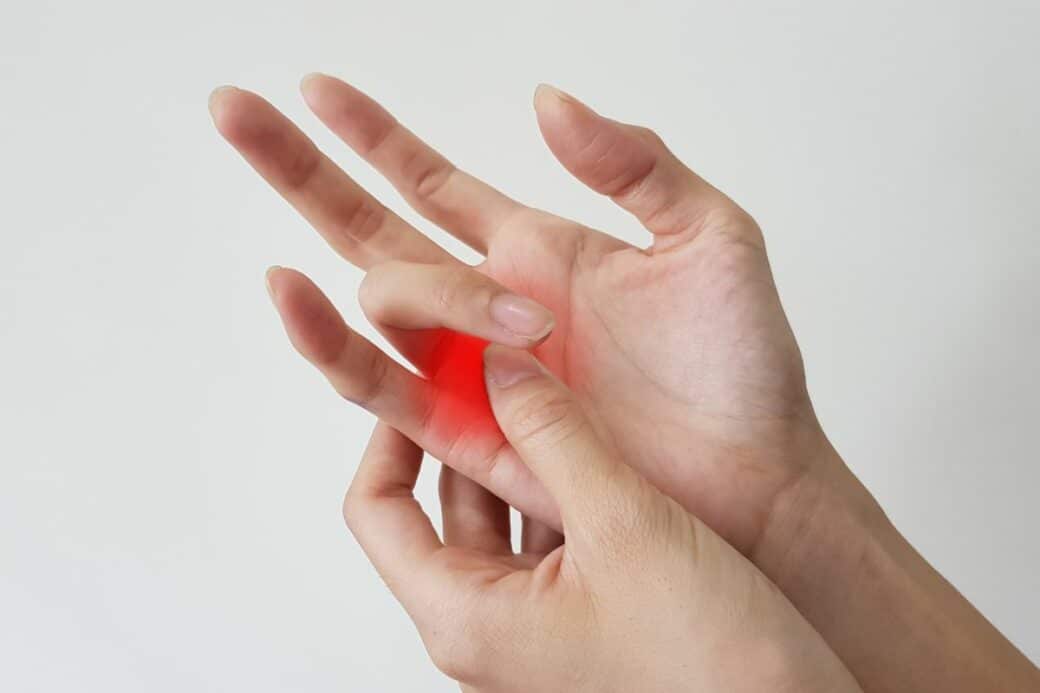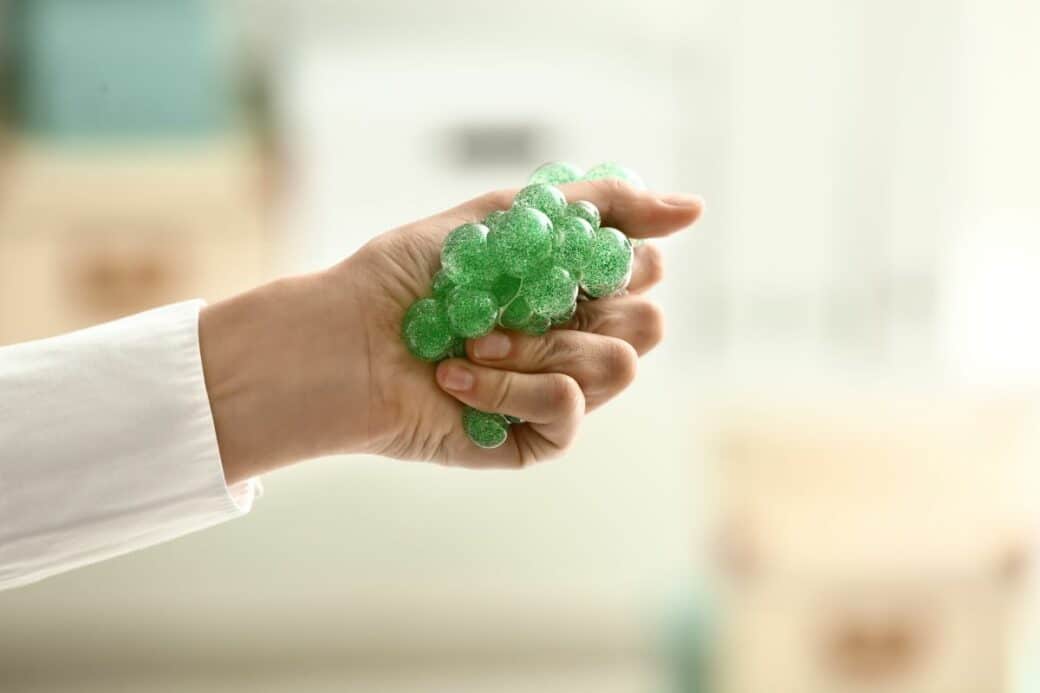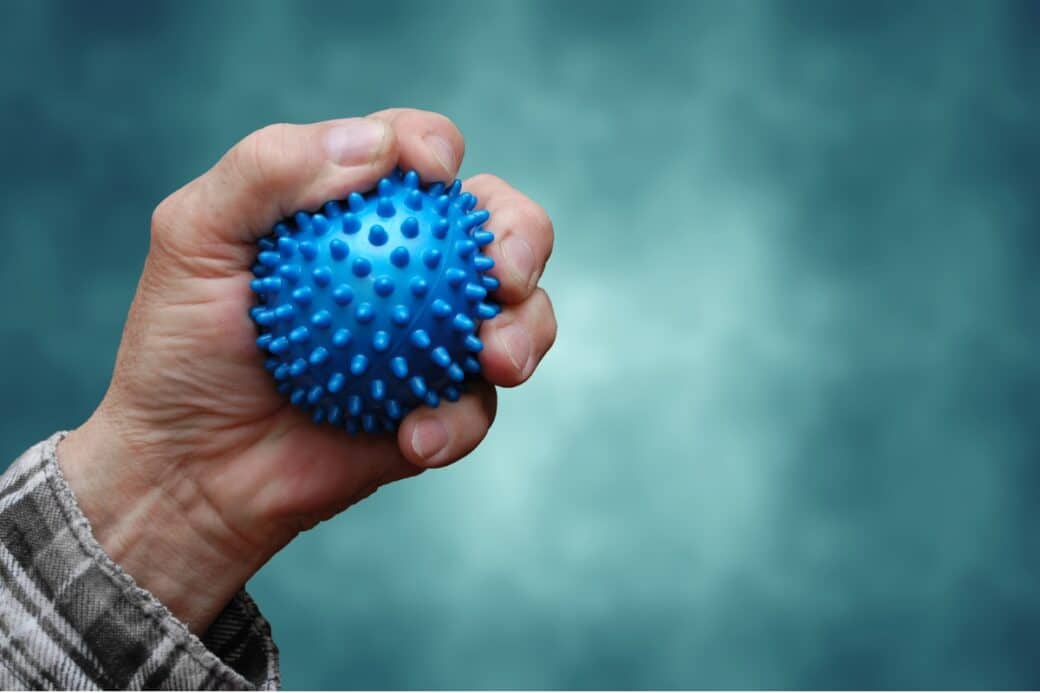Are you experiencing discomfort from the trigger finger? If so, you may be searching for a simple yet effective solution. Look no further than stress balls! These handy little tools have gained popularity for their ability to alleviate stress, but did you know they can also help with trigger fingers? In this article, we will explore how stress balls can provide relief and improve the symptoms of the trigger finger. So, why suffer in discomfort when a stress ball could be your solution? Let’s find out more.

Do Stress Balls Help With Trigger Finger: Understanding Trigger Finger
Definition of Trigger Finger
Trigger finger, also known as stenosing tenosynovitis, is a condition that causes pain and stiffness in the fingers. It occurs when the tendons in the fingers become inflamed or irritated, resulting in difficulty in straightening or bending the affected finger. The name “trigger finger” comes from the symptom of the finger suddenly locking in a bent position, similar to pulling a trigger.
Symptoms of Trigger Finger
The primary symptom of the trigger finger is a popping or clicking sensation when moving the affected finger. Other common symptoms include pain, tenderness, and swelling in the affected finger or thumb. Additionally, individuals may experience stiffness or difficulty in fully straightening or bending the finger. In severe cases, the finger may become locked in a bent position and require manual straightening.
Causes of Trigger Finger
The exact cause of the trigger finger is often unknown, but certain factors can increase the risk of developing the condition. Repetitive finger movements, such as grasping or gripping, can strain the tendons in the finger and lead to inflammation. Additionally, conditions such as rheumatoid arthritis or diabetes can contribute to trigger fingers. It is also more common in individuals who engage in activities that require repetitive hand motions, such as musicians or industrial workers.
Risk Factors for Developing Trigger Finger
Several risk factors may increase the chances of developing a trigger finger. Gender plays a role, as trigger finger is more common in women than in men. Additionally, individuals over the age of 40 are at higher risk, as age-related changes in tendon flexibility can contribute to the condition. Certain health conditions, such as diabetes, rheumatoid arthritis, and hypothyroidism, may also increase the likelihood of developing a trigger finger.
Treatment of Trigger Finger

Overview of Conventional Treatment Options
Treatment for the trigger finger aims to alleviate pain and restore normal finger movement. Conventional treatment options include both surgical and non-surgical approaches. Non-surgical options often include rest, physical therapy, and the use of splints or braces to immobilize the affected finger. If non-surgical methods are ineffective, surgical intervention may be necessary to release the constricted tendon sheath.
Explanation of surgical and non-surgical treatments
Non-surgical treatments, such as rest and splinting, aim to reduce inflammation and allow the affected finger to heal. Physical therapy may also be recommended to improve finger mobility and strength. In cases where non-surgical treatments are unsuccessful, surgery may be required. During surgery, the constricted portion of the tendon sheath is released, allowing for improved finger movement.
Benefits and Risks of various Trigger Finger treatments
Non-surgical treatments offer the advantage of being less invasive and generally have fewer risks compared to surgical interventions. These treatments can provide relief from pain and stiffness, enabling individuals to regain normal finger function. However, they may not be effective for all individuals, particularly those with severe cases of trigger finger. Surgery, while more invasive, can provide long-term relief for individuals who do not respond to non-surgical treatments. However, as with any surgical procedure, there are risks involved, such as infection or tendon damage.
Introduction to Stress Balls
Definition and Purpose of Stress Balls
Stress balls are palm-sized, flexible objects designed to be squeezed or manipulated in the hand. They are commonly used as stress-relief tools, helping individuals to release tension and promote relaxation. The primary purpose of stress balls is to provide a physical outlet for stress and anxiety, assisting individuals in managing their emotions and promoting overall well-being.
Different Types of Stress Balls
There is a wide variety of stress balls available, each offering unique characteristics and benefits. Foam stress balls are among the most common types, offering a soft and squishy texture that is gentle on the hands. Gel-filled stress balls provide a firmer resistance, allowing for more targeted hand exercises. Additionally, there are textured stress balls that feature bumps or ridges, providing sensory stimulation during use.
Benefits of using Stress Balls
Using stress balls can offer numerous benefits beyond stress relief. The repetitive squeezing and releasing action can help improve hand strength and flexibility. It can also improve blood circulation in the hands and fingers, reducing the risk of conditions such as carpal tunnel syndrome. Furthermore, the act of squeezing a stress ball can help individuals refocus their energy and reduce feelings of anxiety or tension.
Mechanism: How Stress Balls work?
Function of Stress Balls
The mechanism behind stress balls is relatively simple yet effective. By squeezing and releasing the stress ball, individuals engage the muscles in their hands and fingers, promoting muscle strength and flexibility. This repetitive motion also helps increase blood flow to the hands, aiding in relaxation and reducing tension. Stress balls act as a physical outlet for stress and provide a tactile sensation that can have a calming effect on the mind.
Physical Effects of Stress Balls on the hands
Regular use of stress balls can have various physical effects on the hands. The squeezing action engages the muscles in the hand, promoting increased strength and dexterity. Additionally, the repetitive motion can help improve joint mobility, reducing stiffness and enhancing flexibility. The increased blood flow to the hands during stress ball use can also relieve muscle tension and promote relaxation.
Psychological Effects of using Stress Balls
In addition to the physical benefits, stress balls can have positive psychological effects. The act of squeezing a stress ball provides a sensory experience that can distract from feelings of stress or anxiety. This physical engagement helps shift attention away from negative thoughts and promotes a sense of calmness and relaxation. Regular use of stress balls can also serve as a mindfulness practice, allowing individuals to focus on the present moment and find relief from daily stressors.
Use of Stress Balls for Trigger Finger
Explanation of How Stress Balls can help
Using stress balls as part of the treatment plan for trigger finger can be beneficial in several ways. The squeezing action stimulates the muscles and tendons in the hand, promoting increased blood flow and reducing inflammation. This can help alleviate pain and stiffness associated with trigger finger. Furthermore, regular use of stress balls can enhance finger strength and flexibility, aiding in the recovery and prevention of future flare-ups.
Procedure on using Stress Balls for Trigger Finger
To effectively use stress balls for trigger finger, start by selecting a stress ball that is comfortable to hold and squeeze. Begin by placing the stress ball in the palm of your hand, using your fingers to grip and apply pressure. Squeeze the stress ball for a few seconds, then release and repeat several times in a row. It is important to listen to your body and not overexert your hand if it feels uncomfortable or painful.
Frequency and Duration of using Stress Balls
The frequency and duration of stress ball usage for trigger finger can vary depending on individual needs and preferences. It is generally recommended to incorporate stress ball exercises into your daily routine, aiming for multiple sessions throughout the day. Start with short sessions of about five minutes and gradually increase the duration as your hand strength and comfort level improve. It is essential to practice moderation and not overdo the exercises, as this can potentially exacerbate symptoms.
Benefits of Using Stress Balls for Trigger Finger
Physical Benefits of Stress Balls
Regular use of stress balls for trigger finger can provide physical benefits such as improved hand strength, flexibility, and joint mobility. The squeezing action helps strengthen the muscles in the hand and promote the smooth movement of tendons. The increased blood flow to the hands during stress ball usage can also aid in reducing inflammation and alleviating pain and stiffness associated with trigger finger.
Psychological Benefits of Stress Balls
In addition to the physical benefits, incorporating stress balls into trigger finger treatment can have positive psychological effects. The act of squeezing a stress ball serves as a diversion from pain and discomfort, promoting a sense of relaxation and calmness. Using stress balls can also serve as a form of self-care, providing individuals with an outlet for stress and anxiety, ultimately improving overall mental well-being.
Overall Advantages of Stress Balls for Trigger Finger sufferers
The use of stress balls for trigger finger offers several advantages for individuals dealing with this condition. It provides a non-invasive, self-management approach that can be easily incorporated into daily routines. Stress balls are readily accessible and portable, allowing individuals to perform exercises at their convenience and in various settings. Furthermore, stress balls offer a holistic approach to trigger finger treatment, addressing both physical and psychological aspects of the condition.
Research on the efficacy of Stress Balls for Trigger Finger
Overview of studies conducted
Scientific research on the specific efficacy of stress balls for trigger finger is limited. However, studies on hand exercises and grip strengthening exercises in the management of various hand conditions provide some insights into the potential benefits of stress ball usage. These studies generally support the positive effects of hand exercises on hand function and pain reduction.
Results and Findings of the Studies
While specific studies on stress balls for trigger finger are limited, research on hand exercises in general reveals promising results. These studies suggest that engaging in regular hand exercises, such as those involving stress balls, can lead to improved hand strength, reduced pain, and enhanced finger dexterity. Although further research is needed to establish the direct effectiveness of stress balls for trigger finger, the available evidence suggests their potential usefulness in managing the condition.
Limitations and Potential Biases of the Studies
The studies conducted on hand exercises and grip strengthening exercises, while informative, have certain limitations. Many studies have relatively small sample sizes, limiting the generalizability of their findings. Additionally, there may be variability in the exercise protocols used across studies, making it difficult to draw definitive conclusions. It is important to interpret the results with caution and consider individual factors when determining the appropriateness of stress balls for trigger finger treatment.
Potential Drawbacks of using Stress balls for Trigger Finger
Possible Side effects and Risks
Using stress balls for trigger finger is generally considered safe; however, it is essential to be mindful of potential risks. Excessive or improper use of stress balls can lead to increased hand pain or discomfort. Individuals should listen to their bodies and avoid overexerting the hand if symptoms worsen. It is also important to consult with a healthcare professional before incorporating stress balls into a treatment plan, especially if there are underlying health conditions or concerns.
Situations Where Stress Balls may not be beneficial
While stress balls can be beneficial for many individuals with trigger finger, there may be situations where they may not provide significant relief. Severe cases of trigger finger that require more intensive treatment, such as surgery, may not see substantial improvement from stress ball usage alone. Additionally, if an individual’s trigger finger is caused by factors unrelated to overuse or muscle tension, such as rheumatoid arthritis, stress balls may be less effective in managing symptoms.
Expert opinions on drawbacks
Experts generally agree that stress balls can be helpful as part of a holistic approach to trigger finger treatment. However, it is crucial to consider individual circumstances and consult with a healthcare provider. Experts caution against relying solely on stress balls for severe cases of trigger finger or when there are underlying health issues. They emphasize the importance of a comprehensive treatment plan that may include other interventions such as physical therapy or surgery, if necessary.
Alternatives to Stress Balls for Trigger Finger
Other non-conventional Trigger Finger treatments
In addition to stress balls, there are several non-conventional treatment options that individuals with trigger finger may consider. Acupuncture, for example, has been used to alleviate symptoms and promote hand and finger mobility. Hand exercises that target specific muscles and tendons, such as finger stretches and grip strengthening exercises, can also be beneficial. Additionally, heat therapy, such as warm compresses or paraffin wax baths, may help reduce pain and stiffness.
Benefits and risks of alternative treatments
Each alternative treatment for trigger finger carries its own benefits and risks. Acupuncture has been reported to provide pain relief and improved hand function in some cases, although results may vary. Hand exercises, similar to stress ball usage, can help improve finger strength and promote flexibility. However, it is crucial to perform exercises correctly to prevent further injury. Heat therapy can alleviate pain and stiffness, but caution should be exercised to avoid burns or other adverse reactions.
Comparisons of alternative treatments to Stress Balls
When considering alternative treatments to stress balls for trigger finger, it is essential to weigh the pros and cons of each option. Stress balls provide a convenient and affordable method for managing symptoms, promoting hand strength and flexibility, and reducing stress. Acupuncture offers a more holistic approach, targeting the energy flow within the body to alleviate symptoms. Hand exercises and heat therapy can provide similar physical benefits to stress balls but may require more specific guidance and supervision.
Conclusion: Should You Use Stress Balls for Trigger Finger?
Summary of the Benefits and drawbacks
In summary, stress balls can be a beneficial tool for individuals with trigger finger due to their potential to improve hand strength, mobility, and reduce pain. They offer a non-invasive and accessible treatment option that can be easily incorporated into daily routines. However, stress balls may not be effective for severe cases of trigger finger or when the underlying cause of the condition differs from overuse or muscle tension. It is important to carefully consider individual circumstances and consult with a healthcare provider before relying solely on stress balls for trigger finger treatment.
Consideration of Individual cases
When deciding whether to use stress balls for trigger finger, individual factors must be taken into account. The severity of the condition, the presence of underlying health conditions, and the effectiveness of other treatment options are all considerations. It is advisable to consult with a healthcare professional or hand specialist to determine the most appropriate treatment plan for each individual case. They can provide personalized guidance based on specific needs, ensuring the best possible outcome for managing trigger finger.
Expert opinions and advice on the use of Stress Balls for Trigger Finger
Experts generally acknowledge the potential benefits of stress balls for trigger finger. They suggest incorporating stress balls as part of a comprehensive treatment plan that may include other interventions, such as physical therapy or surgery, when warranted. Healthcare providers can provide valuable insights and guidance based on their knowledge and expertise, tailoring the treatment approach to the individual’s needs. By working closely with healthcare professionals and considering their advice, individuals can make informed decisions regarding the use of stress balls for managing trigger finger.




